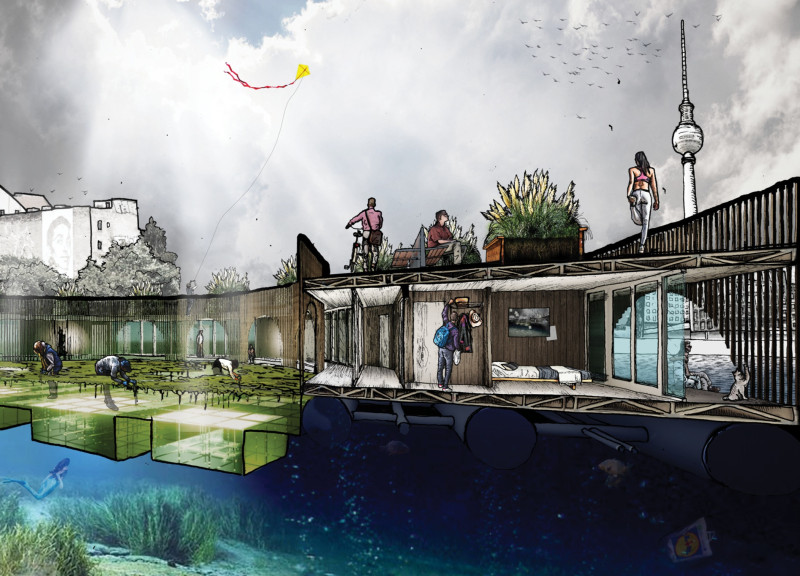5 key facts about this project
Alga is located in the waterways of Berlin and aims to tackle the issues of affordable housing and pollution. The project combines communal living with ecological restoration, creating a floating community that adapts to its surroundings. It seeks to transform polluted waterways into usable spaces, fostering connections among residents and contributing to the improvement of local environments.
Floating Housing Design
The design focuses on floating housing units that can move, adapt, and change. These units are built to navigate the canals and rivers of Berlin. This mobility responds to the fluidity of water, creating a living environment that interacts with nature. Each unit is designed to fit well within the local setting, encouraging a close relationship with the water.
Affordable Community Structure
Alga addresses affordability by using non-privately owned federal waterways, which could also qualify for environmental funding. This financial aspect allows for a lower cost of living. The community encourages shared spaces that help reduce individual housing sizes while promoting social interaction. By emphasizing a lifestyle based on shared values and respect for the environment, the design creates a sense of community among its residents.
Ecological Integration
A key feature of Alga is the cultivation of algae in specific water pools. This algae acts as the "heart of the community," helping to clean the polluted water. It thrives on nutrients present in the water, turning waste into useful products like biofuel and organic fertilizer. This relationship highlights the project’s commitment to sustainability and environmental improvement.
Dynamic Arrangements
The layout includes varied arrangements of housing units, forming constellations that respond to the shapes and sizes of the waterways. This setup promotes different kinds of community interactions and creates distinctive atmospheres, allowing each cluster to develop its character. The connections among the units strengthen social ties while supporting the project's ecological goals.
Overall, Alga features a modular design where each unit serves specific community and ecological purposes. The combination of private areas and communal spaces encourages social connections while promoting sustainable living. The project's layout and function reflect a practical approach to coexistence with nature in the urban setting.



















































